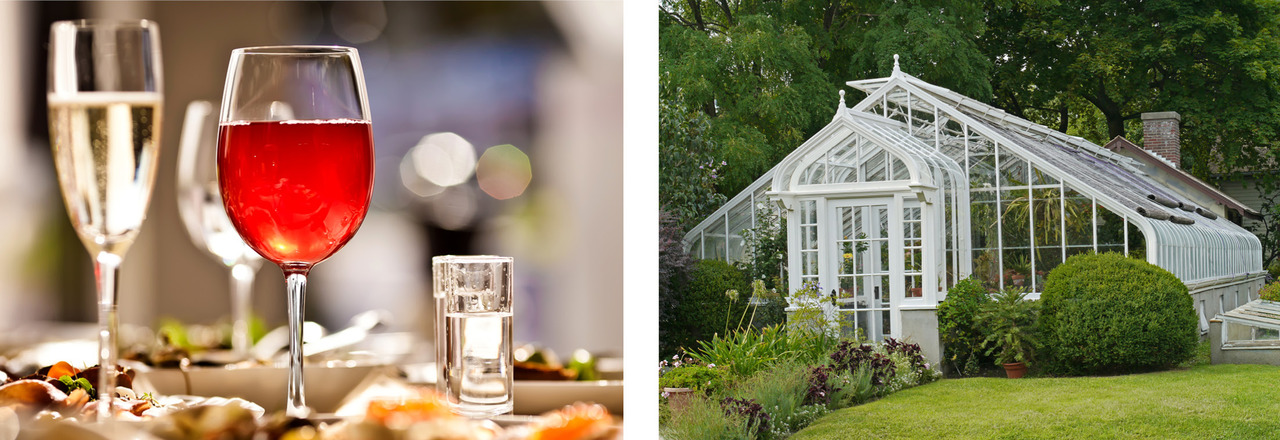13. Materials from non-living nature
Minerals
 Various minerals can be found in the crust of planet Earth. Some of these minerals, such as gold (Au), are elements. Elements consist of only one type of atom.
Various minerals can be found in the crust of planet Earth. Some of these minerals, such as gold (Au), are elements. Elements consist of only one type of atom.
Some minerals, such as quartz (SiO2), are compounds. Compounds consists of atoms from more than one element. The image on the right shows quartz crystals.
A single rock type usually contains 3–5 different minerals. For example, granite consists of three different minerals: white quartz, red or grey feldspar and black schist. The edges of pavements and walkways are usually made from granite.
Mineral-based soil types include till, gravel, sand and clay. In till, all of the original substances are still completely mixed and separate from one another. Gravel is a finer material than till, whereas sand is finer than gravel. Clay is the finest soil type.

Soil types: Fine sand, gravel, coarse sand and clay.
Glass
Glass is made from sand. The most popular sand used in glass production is white quartz sand. When heated up, the sand becomes bright and translucent. The sand is melted in an extremely hot oven, where it melts into glass. As the glass cools down, it becomes sticky and can be molded into different shapes.

Glass is made by melting sand.
Glass is heavy and it breaks easily when it falls. However, it resists scratches well. It is widely used to create drinking glasses, windows and fine objects. Plastics have reduced the amount of glass used in functional items.

Glass can be used to make drink glasses (on the left) and greenhouses (on the right).
Metal
 Metals are useful substances. They can be used to make various useful and valuable items. Usually, metals are refined from underground ore. Ore is a type of rock that contains enough metal for it to be mined.
Metals are useful substances. They can be used to make various useful and valuable items. Usually, metals are refined from underground ore. Ore is a type of rock that contains enough metal for it to be mined.
For example, copper ore can used to make copper (Cu), whereas iron ore can be used to make iron (Fe). Some metals, such as gold (Au), can also be found as small flakes in nature. The picture on the right shows a chunk of magnetite, which is a type of iron ore.
Plastics have replaced metals as the raw materials for many functional items. However, metals are still useful when creating things that need to be extremely durable (e.g. machinery and vehicles), conduct heat well (e.g. pots and pans), or conduct electricity easily (e.g. electric wires).
Metals can also be melted and reused. Metals can also be blended together to create new kinds of materials. For example, brass can be made by mixing copper and zinc. Brass is used in various instruments, such as cymbals (pictured below).
Cooking pots and pans are still mostly made from metal. Metal conducts heat well. Nowadays, most pots and pans are made from stainless steel, which is made by blending various metals together.

Image on the left: A cymbal made from brass. Image on the right: Cooking pots are made from metals, because metals conduct heat very well.
Most electric conductors are also made from metals, as they conduct electricity easily. Most electric wires contain at least two conductors. The electric wire below contains three copper wires. In computers and smartphones, the conductors can be made out of even rarer metals, such as gold. The thick conductors found in power lines are made out of aluminum, as it is a light and durable metal.

This electric wire contains three conductor wires made out of copper.

Tools, or at least their functional parts, are made from metals. Usually, they are made from steel. Steel is a mixture of metals that mostly consists of iron (Fe).
By adding other metals and elements to the mixture, the resulting material is durable and hard.
Terminology
| Term | Explanation |
|---|---|
| rock | Hard material found in planet Earth's crust. |
| soil | Loose material found on top of rock. |
| rock type | Rock that is formed of a certain combination of minerals. E.g. granite. |
| soil type | Soil that has a specific texture and contains specific rock types. E.g. till and sand. |
| mineral | Elements (e.g. gold) or compounds (e.g. quartz) that make up rock. |
| ore | A type of rock that contains high concentrations of metal. |
| metal | Durable elements that conduct heat and electricity well. E.g. copper, gold and zinc. |